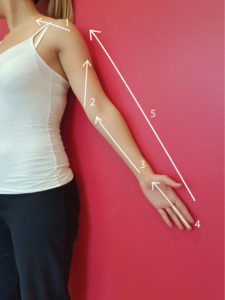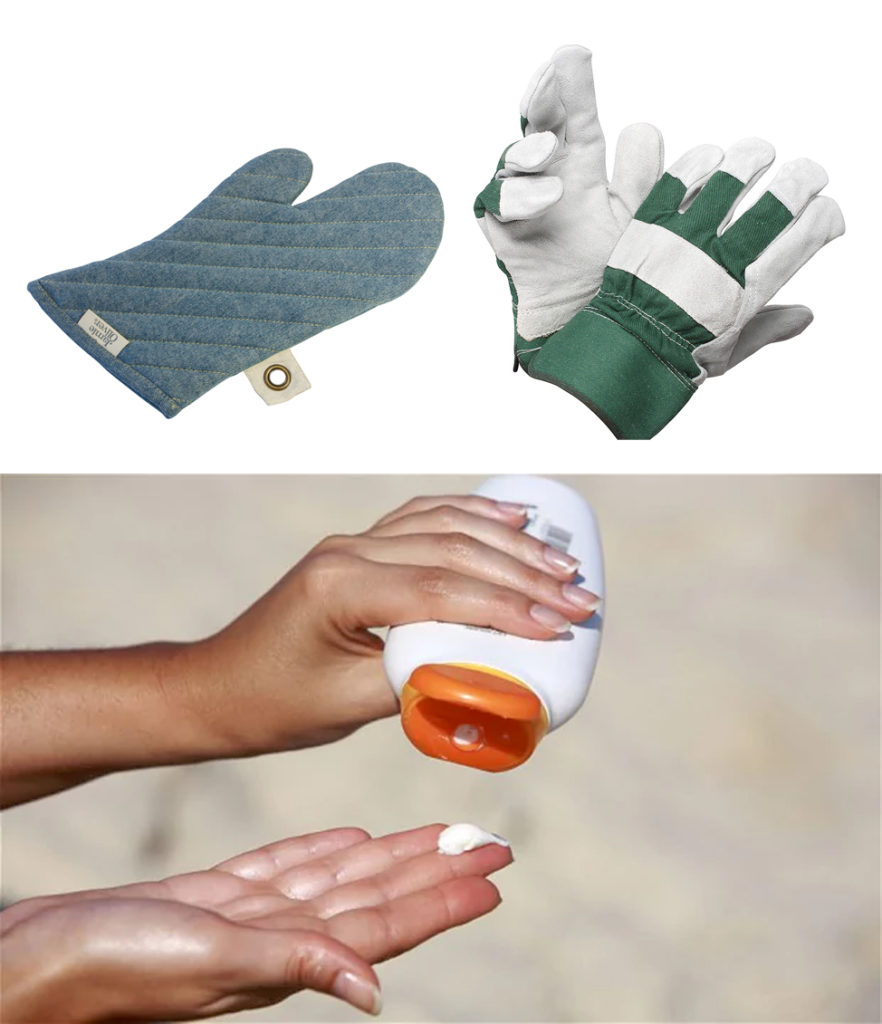How to reduce your risk of Lymphoedema after lymph node removal
It is important to keep your skin on your affected arm hydrated and in tip top condition to prevent dryness. We advise moisturising your arm daily with any cream that suits your skin type and will help your skin to protect you against infection.

Daily Skin Care Routine to help prevent Lymphoedema
It is better to use a cream than a lotion and you can use any thick cream that you do not react to for this. Ideally, this should be done at the end of the day before bed.
How to moisturise your arm and clear the lymph system
We advise you to moisturise your arm every day ideally in the evening. Using the recommended skin care technique will improve the drainage of your lymphatic system and is an important part of your recovery.
Start by placing cream in the palm of your non affected hand. Put your hand in position one, the shoulder, sweep up towards the neck in slow, rhythmical strokes covering the whole area. This is a light and gentle movement. Then move to position two and continue to sweep upwards. Work your way down your arm until you reach the hand. Place your hand on the back of your affected hand, pull your fingers through the web spaces and pull backwards over the back of the hand. Finish by sweeping up the arm to position one. Ensure the hair on the arm is stroked back down to the normal growing position.
Whenever possible protect your skin against damage, cuts and grazes
- Use a high factor sunscreen to protect against sunburn.
- Wear oven gloves when cooking.
- Use insect repellent to reduce risk of insect bites
- Wear gloves whilst gardening.
- Take care when cutting your nails
- Take care to avoid pet scratches or bites
- Avoid having injections and blood pressure readings in the affected arm.
- Avoid having blood samples taken from the affected arm.

If you do have a burn, cut, graze, scratch or bite.
- Clean the area and pat dry.
- If there is bleeding cover the wound with a plaster until a scab has formed.
- Keep an eye on the limb for signs of cellulitis which is infection (redness, heat, swelling, tenderness). Please see the section on Cellulitis on the previous page. If you develop symptoms of infection or develop a temperature visit your GP as you may need antibiotics.
The following precautions may also help to reduce the risk of lymphoedema.
- When removing under arm hair, use an electric razor. You may use a depilatory cream, but check for sensitivity or allergy first.
- Avoid using steam rooms, saunas, very hot baths
- Avoid hot packs and deep tissue massage over the affected limb.
- Try to maintain a healthy weight. If you are overweight your body and lymphatic systems have to work harder.
How much to use your arm after lymph node removal
Initially after lymph node removal the lymph system may take some time to settle and drain normally. It is important to do your exercise provided by the physiotherapy team. This will help you regain normal mobility in the arm and shoulder.
Gradually increase repetitive activity over the first few weeks and allow for regular rest periods. This will allow your lymph system to adjust to the increase in exercise
Aim to build gradually to using your arm as normally as possible but do not do too much to the point that it feels heavy or aches.
If you notice problems with repeated heaviness, tightness or swelling after activity contact your breast care nurse for advice
